BLOG - Page 38
Recently created mixtures:

Sea-Buckthorn Macerated oil
February 7, 2019

Home made air freshener
June 29, 2016

Homemade Dog-rose distillate
June 28, 2016

Homemade jasmine distillate
June 22, 2016

Moxibustion treatment with Moxa stick
May 30, 2016

Face and body gentle oil cleanser
May 26, 2016
BLOG / LATEST ADDITIONS!
Safflower Oil (Carthamus Tinctorius) ☸ Base oils ☸ Base / General
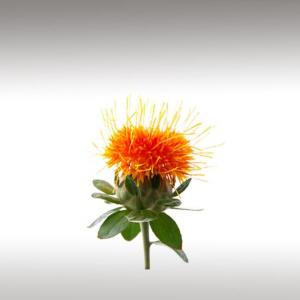

Safflower (Carthamus Tinctorius) is a highly branched, herbaceous, thistle-like annual plant. It is commercially cultivated for vegetable oil extracted from the seeds. Plants are 30 to 150 cm tall with globular flower heads having yellow, orange, or red flowers.
Safflowers: both as a plant and after being pressed into an oil have had a rich history in civilizations in both the east and the west and it’s still very much viable in today’s economy and diet.
Safflower is native to arid environments having seasonal rain. It grows a deep taproot which enables it to thrive in such environments. Safflower is one of humanity's oldest crops. Chemical analysis of ancient Egyptian textiles dated to the Twelfth dynasty identified dyes made from Safflower, and garlands made from Safflowers were found in the tomb of the pharaoh Tutankhamun. Safflower was also known as carthamine in the nineteenth century.
It is a minor crop today, with about 600,000 tons being produced commercially in more than sixty countries worldwide. India, United States, and Mexico are the leading producers, with Ethiopia, Kazakhstan, China, the Arab World, Argentina and Australia accounting for most of the remainder.
The untreated seeds have a bitter taste and a somewhat dry quality so they are pressed into oil and then used as an oil in commercial production of products like soap and linoleum floor tile. The treated seeds are pressed into oil where they are then classified into two types that are both used in cooking; monounsaturated and polyunsaturated oil.
The monounsaturated oils are often advertised for their durability in cooking at high temperatures.
The polyunsaturated Safflower oil is high in linoleic acid and is used as cold oil such as mixed into salad dressings. The polyunsaturated oil is not shelf stable and must be kept in the refrigerator or in a cool location.
Safflower flowers are occasionally used in cooking as a cheaper substitute for Saffron, and were sometimes referred to as "Bastard Saffron".
Chemical structure:
Safflower seed oil is flavorless and colorless, and nutritionally similar to Sunflower oil. Safflower oil tends to carry far more Vitamin E that Olive oil.
Safflower and Sunflower oil have a significant amount in common such as they are both higher in essential fatty acids omega - 3 and omega - 6 than any other oils.
Sunflower oil contains more Vitamin E than Safflower oil, or any other oil and it is sometimes preferred for that reason. Safflower oil and Canola oil have a lot of the same great heart-disease fighting nutrients like monounsaturated fats and omega-3 fatty acids.
Safflower oil is comprised of 78,71% oleic fatty acids, 4,85% palmitic fatty acids, 12,44% linoleic fatty acids, 2,40% stearic fatty acids and 08% linoleic fatty acids. Safflower oil has the highest concentration of linoleic acid that is available on the commercial market.
Safflowers: both as a plant and after being pressed into an oil have had a rich history in civilizations in both the east and the west and it’s still very much viable in today’s economy and diet.
Safflower is native to arid environments having seasonal rain. It grows a deep taproot which enables it to thrive in such environments. Safflower is one of humanity's oldest crops. Chemical analysis of ancient Egyptian textiles dated to the Twelfth dynasty identified dyes made from Safflower, and garlands made from Safflowers were found in the tomb of the pharaoh Tutankhamun. Safflower was also known as carthamine in the nineteenth century.
It is a minor crop today, with about 600,000 tons being produced commercially in more than sixty countries worldwide. India, United States, and Mexico are the leading producers, with Ethiopia, Kazakhstan, China, the Arab World, Argentina and Australia accounting for most of the remainder.
The untreated seeds have a bitter taste and a somewhat dry quality so they are pressed into oil and then used as an oil in commercial production of products like soap and linoleum floor tile. The treated seeds are pressed into oil where they are then classified into two types that are both used in cooking; monounsaturated and polyunsaturated oil.
The monounsaturated oils are often advertised for their durability in cooking at high temperatures.
The polyunsaturated Safflower oil is high in linoleic acid and is used as cold oil such as mixed into salad dressings. The polyunsaturated oil is not shelf stable and must be kept in the refrigerator or in a cool location.
Safflower flowers are occasionally used in cooking as a cheaper substitute for Saffron, and were sometimes referred to as "Bastard Saffron".
Chemical structure:
Safflower seed oil is flavorless and colorless, and nutritionally similar to Sunflower oil. Safflower oil tends to carry far more Vitamin E that Olive oil.
Safflower and Sunflower oil have a significant amount in common such as they are both higher in essential fatty acids omega - 3 and omega - 6 than any other oils.
Sunflower oil contains more Vitamin E than Safflower oil, or any other oil and it is sometimes preferred for that reason. Safflower oil and Canola oil have a lot of the same great heart-disease fighting nutrients like monounsaturated fats and omega-3 fatty acids.
Safflower oil is comprised of 78,71% oleic fatty acids, 4,85% palmitic fatty acids, 12,44% linoleic fatty acids, 2,40% stearic fatty acids and 08% linoleic fatty acids. Safflower oil has the highest concentration of linoleic acid that is available on the commercial market.
Submitted by OperaDreamhouse (June 19, 2014)
Moringa Seed Oil (Moringa Oleifera) ☸ Base oils ☸ Base / General
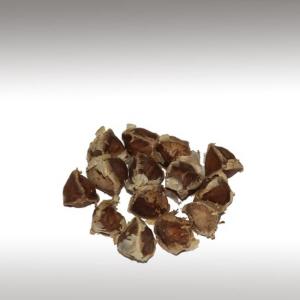

English common names include: Moringa, Drumstick tree (from the appearance of the long, slender, triangular seed-pods), Horseradish tree (from the taste of the roots, which resembles horseradish), Ben oil treeor Benzoil tree
(from the oil which is derived from the seeds).
It is a fast-growing, drought-resistant tree, native to the southern foothills of the Himalayas in northwestern India, and widely cultivated in tropical and sub-tropical areas where its young seed pods and leaves are used as a vegetable.
It is a fast-growing, drought-resistant tree, native to the southern foothills of the Himalayas in northwestern India, and widely cultivated in tropical and sub-tropical areas where its young seed pods and leaves are used as a vegetable.
Moringa is grown in home gardens and as living fences in Southern India and Thailand, where it is commonly sold in local markets. Moringa is also actively cultivated by the World Vegetable Center in Taiwan,
a center for vegetable research with a mission to reduce poverty and
malnutrition in developing countries through improved production and
consumption of vegetables.
The Moringa seeds yield 38 - 40% edible oil (called Ben oil, from the high concentration ofrom the high concentration of behenic acid contained in the oil) that can be used in cooking, cosmetics, and lubrication.
Moringa oil is extracted from mature Moringa seeds which are about 40% oil. This oil can be kept at a room temperature for a very long time.
The Moringa seeds yield 38 - 40% edible oil (called Ben oil, from the high concentration ofrom the high concentration of behenic acid contained in the oil) that can be used in cooking, cosmetics, and lubrication.
Moringa oil is extracted from mature Moringa seeds which are about 40% oil. This oil can be kept at a room temperature for a very long time.
Submitted by OperaDreamhouse (June 19, 2014)
Grape Seed Oil (Vitis Vinifera) ☸ Base oils ☸ Base / General
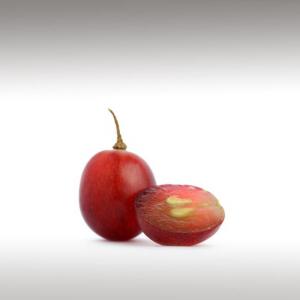

Grape Seed oil (also called Grapeseed oil or Grape oil) is pressed from the seeds of Grapes, and is thus an abundant by-product ofwinemaking.
For thousands of years, Grapes have been harvested globally for both their medicinal and nutritional properties. Grapeseed oil has been shown to have strong anti-oxidant. Sodium Grapeseedate is the sodium salt of grape seed fatty acids.
Vitis Vinifera (Grape) seed oil is used in a wide range of products including, soaps and detergents, cuticle softeners, make-up products, and skin and hair care products. Sodium Grapeseedate is primarily used in soaps.
The Grape (Vitis Vinifera) is thought to have been growing wild throughout the world long before the arrival of humans. Our most common grape is one of the oldest cultivated plants.
Grape Seed oil is delicate and light-colored. Because the oil is odorless, it is the most commonly used carrier oil in aromatherapy.
For thousands of years, Grapes have been harvested globally for both their medicinal and nutritional properties. Grapeseed oil has been shown to have strong anti-oxidant. Sodium Grapeseedate is the sodium salt of grape seed fatty acids.
Vitis Vinifera (Grape) seed oil is used in a wide range of products including, soaps and detergents, cuticle softeners, make-up products, and skin and hair care products. Sodium Grapeseedate is primarily used in soaps.
The Grape (Vitis Vinifera) is thought to have been growing wild throughout the world long before the arrival of humans. Our most common grape is one of the oldest cultivated plants.
Grape Seed oil is delicate and light-colored. Because the oil is odorless, it is the most commonly used carrier oil in aromatherapy.
Submitted by OperaDreamhouse (June 19, 2014)
Acai Berry Oil (Euterpe Oleracea) ☸ Base oils ☸ Base / General
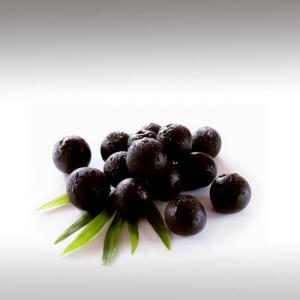

The Acai Palm, also known as the Assai Palm, is a species of palm trees native to Brazil and other regions of South and Central America.
Acai oil is cold-pressed from the seeds of the Acai berry. Berries are gathered by hand from protected regions of the Amazon rainforest and immediately processed under cold and air-free conditions to yield the freshest, purest oil possible.
Acai oil is the "Number one superfood" for skin and hair.
The Acai Berry oil is the most powerful antioxidant of any edible fruit in the world. Acai oil contains a rich array of nutrients and antioxidants and anti-inflammatory properties.
Acai oil is green in color and has a bland aroma. It is high in oleic acid (omega-9) and palmitic acid (table). It possesses an impressive combination of omega-6 and omega-9 essential fatty acids, phytosterols, vitamins, minerals and essential amino acids.
Acai Berry oil is rich in anthocyanins and phenols making the oil a very powerfulantioxidant andanti-inflammatory. Its significant content of anthocyanins is reported to be 10-30 times higher than the anthocyanin content of red wine grapes.
Acai oil is cold-pressed from the seeds of the Acai berry. Berries are gathered by hand from protected regions of the Amazon rainforest and immediately processed under cold and air-free conditions to yield the freshest, purest oil possible.
Acai oil is the "Number one superfood" for skin and hair.
The Acai Berry oil is the most powerful antioxidant of any edible fruit in the world. Acai oil contains a rich array of nutrients and antioxidants and anti-inflammatory properties.
Acai oil is green in color and has a bland aroma. It is high in oleic acid (omega-9) and palmitic acid (table). It possesses an impressive combination of omega-6 and omega-9 essential fatty acids, phytosterols, vitamins, minerals and essential amino acids.
Acai Berry oil is rich in anthocyanins and phenols making the oil a very powerfulantioxidant andanti-inflammatory. Its significant content of anthocyanins is reported to be 10-30 times higher than the anthocyanin content of red wine grapes.
Submitted by OperaDreamhouse (June 19, 2014)
Borage Oil (Borago Officinalis) ☸ Base oils ☸ Base / General
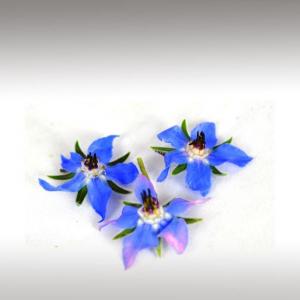

Borage (Borago Officinalis), also known as a Starflower, is an annual herb. The leaves are edible and the plant is grown in gardens for that purpose in some parts of Europe. The plant is also commercially cultivated for borage seed oil extracted from its seeds.
It grows to a height of 60 - 100 cm, and is bristly or hairy all over the stems and leaves: the leaves are alternate, simple, and 5 - 15 cm long. The flowers are complete, perfect with five narrow, triangular-pointed petals. Flowers are most often blue in color, although pink flowers are sometimes observed.
In temperate climate such as in the UK, its flowering season is relatively long, from June to September. In milder climates, Borage will bloom continuously for most of the year.
One of the most important nutrients in Borage is essential fatty acids, something our body needs for good health. Essential fatty acids must be ingested from diet.
In foods, borage is eaten in salads and soups. It is used for a nice addition to a salad.
It grows to a height of 60 - 100 cm, and is bristly or hairy all over the stems and leaves: the leaves are alternate, simple, and 5 - 15 cm long. The flowers are complete, perfect with five narrow, triangular-pointed petals. Flowers are most often blue in color, although pink flowers are sometimes observed.
In temperate climate such as in the UK, its flowering season is relatively long, from June to September. In milder climates, Borage will bloom continuously for most of the year.
One of the most important nutrients in Borage is essential fatty acids, something our body needs for good health. Essential fatty acids must be ingested from diet.
In foods, borage is eaten in salads and soups. It is used for a nice addition to a salad.
Submitted by OperaDreamhouse (June 19, 2014)
Black Mustard Oil (Brassica Nigra) ☸ Base oils ☸ Base / General
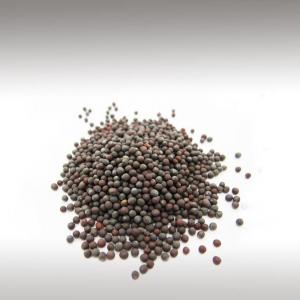

It is an annual plant with a much-branched stem, and lobed, roughly
lyre-shaped leaves, 16cm long. Bright yellow flowers are produced all
summer, followed by small, erect, 4-angled pods with dark brown seeds.
The term Mustard oil is used for two different oils that are made from Mustard seeds:
A fatty vegetable oil resulting from pressing the seeds.
An essential oil resulting from grinding the seeds, mixing them with water, and extracting the resulting volatile oil by distillation.
It is often used for cooking in North India, Eastern India, Nepal, Bangladesh and Pakistan. In Bengal, Orissa, Assam and Nepal, it is the traditionally preferred oil for cooking. The oil makes up about 30% of the Mustard Seeds.
Mustard oil has about 60% monounsaturated fatty acids (42% erucic acid and 12%oleic acid). It has about 21% polyunsaturated fats (6% the omega-3alpha-linolenicacid and 15% the omega-6 linoleicacid), and it has about 12% saturated fats.
The Mustards, Black and White, are both wild herbs growing in waste places in this country, but are cultivated for their seeds, which are valuable medicinally and commercially. They were originally treated as members of a small genus of frequently cultivated European and Asiatic herbs named Sinapis, from the Greek "Sinapi" (Mustard), a name used by Theophrastus, but they are now generally included in the Cabbage genus, Brassica.
The oil makes up about 30% of the Mustard Seeds. It can be produced from Black Mustard (Brassica nigra), brown Indian Mustard (Brassica Juncea), and White Mustard (Brassica Hirta).
Now we talk about Black Mustard oil (Brassica Nigra):
The plant is believed to be native to the southern Mediterranean region of Europe and possibly South Asia where it has been cultivated for thousands of years. The spice is generally made from ground seeds of the plant, with the seed coats removed. The small (1 mm) seeds are hard and vary in color from dark brown to black. They are flavorful, although they have almost no aroma.
Mustard oil has about 60% monounsaturated fatty acids (42% erucic acid and 12% oleic acid) it has about 21% polyunsaturated fats (6% the omega-3 alpha-linolenic acid and 15% the omega-6 linoleic acid), and it has about 12% saturated fats. Mustard oil has high levels of both alpha-Linolenic acid and erucic acid.
It is dark yellow in color and slightly pungent. Black Mustard (Brassica Nigra) fell out of use in commercial Mustard products in the 1950s.
The term Mustard oil is used for two different oils that are made from Mustard seeds:
A fatty vegetable oil resulting from pressing the seeds.
An essential oil resulting from grinding the seeds, mixing them with water, and extracting the resulting volatile oil by distillation.
It is often used for cooking in North India, Eastern India, Nepal, Bangladesh and Pakistan. In Bengal, Orissa, Assam and Nepal, it is the traditionally preferred oil for cooking. The oil makes up about 30% of the Mustard Seeds.
Mustard oil has about 60% monounsaturated fatty acids (42% erucic acid and 12%oleic acid). It has about 21% polyunsaturated fats (6% the omega-3alpha-linolenicacid and 15% the omega-6 linoleicacid), and it has about 12% saturated fats.
The Mustards, Black and White, are both wild herbs growing in waste places in this country, but are cultivated for their seeds, which are valuable medicinally and commercially. They were originally treated as members of a small genus of frequently cultivated European and Asiatic herbs named Sinapis, from the Greek "Sinapi" (Mustard), a name used by Theophrastus, but they are now generally included in the Cabbage genus, Brassica.
The oil makes up about 30% of the Mustard Seeds. It can be produced from Black Mustard (Brassica nigra), brown Indian Mustard (Brassica Juncea), and White Mustard (Brassica Hirta).
Now we talk about Black Mustard oil (Brassica Nigra):
The plant is believed to be native to the southern Mediterranean region of Europe and possibly South Asia where it has been cultivated for thousands of years. The spice is generally made from ground seeds of the plant, with the seed coats removed. The small (1 mm) seeds are hard and vary in color from dark brown to black. They are flavorful, although they have almost no aroma.
Mustard oil has about 60% monounsaturated fatty acids (42% erucic acid and 12% oleic acid) it has about 21% polyunsaturated fats (6% the omega-3 alpha-linolenic acid and 15% the omega-6 linoleic acid), and it has about 12% saturated fats. Mustard oil has high levels of both alpha-Linolenic acid and erucic acid.
It is dark yellow in color and slightly pungent. Black Mustard (Brassica Nigra) fell out of use in commercial Mustard products in the 1950s.
Submitted by OperaDreamhouse (June 19, 2014)
Elemi Essential Oil (Canarium Luzonicum) ☸ Essential oils ☸ Medicine / Health
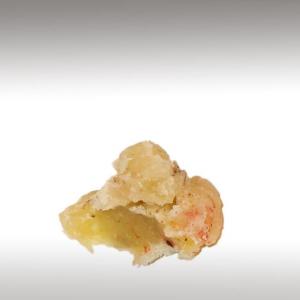

Elemi essential oil was used throughout the Middle East for thousands of years as an antiseptic, and for healing scars and wounds.
At some time during the 16th century Elemi was introduced into Europe and used extensively in folk medicine. It was employed in poultices for ulcerated wounds, ointments and soothing balms for skin infections.
In the 17th century, a pioneering physician named J. J. Wecker used Elemi in salves to treat soldiers who had been injured in battle.
Historically, Elemi was used in soaps and incense, to soothe chest infections, and as a steam inhalation for sinusitis.
The health benefits of Elemi essential oil can be attributed to its properties like antiseptic, analgesic, expectorant, stimulant, tonic, anti-inflammatory, antispasmodic, antimicrobial, anti-depressant, anti-catarrhal, anti-infectious and sedative.
It is used as a herbal medicine to treat bronchitis, catarrh, extreme coughing, mature skin, scars, stress, and wounds. Elemi can be useful with respiratory complaints such as bronchitis, dry cough and excess mucus. It is also helpful in cases of heavy perspiration, cuts and skin infections.
Elemi essential oil is not only applicable in protecting wounds: it is also effective in preventing infections in the urethra, urinary bladder, urinary tract, colon, kidneys, intestines, stomach, and other internal organs.
Elemi oil is helpful in the treatment of the respiratory tract, skin conditions and in lifting the spirit. It can be used in cases of nervous exhaustion and stress related conditions: it gives a feeling of peace.
Elami very good from bronchitis, ulcers, coughs, inflammation (breast and uterus), rashes (allergic) ills.
It is effective in cutting down pain related to colds, fevers, or sprains. It also helps in curing headaches, migraines, muscular pain, pain in the joints, and pain in the ears.
The effect of a stimulant is widespread. It stimulates almost all of the functions in the body. It stimulates circulation, the secretion of hormones and enzymes from the endocrinal glands, the discharge of bile and other gastric juices into the stomach.
Furthermore, it stimulates nervous responses, including those affecting the neurons in the brain, the heartbeat, respiration, peristaltic motion of the intestines, and menstrual discharges, as well as the production and secretion of milk in the breasts. These last two are due to its stimulating effects on certain hormones such as estrogen and progesterone.
Elami essential oil helps in the growth and proper functioning of the body by toning up all the organic systems functioning in the body, such as the respiratory system, the digestive system, the cardio-vascular system, the circulatory system, the neurotic system, the excretory system, the nervous system and the endocrinal system. It also boosts up the immune system of the body.
Side effects:
No special precautions are needed, but please note that Elemi essential oil can be irritating to a sensitive skin.
At some time during the 16th century Elemi was introduced into Europe and used extensively in folk medicine. It was employed in poultices for ulcerated wounds, ointments and soothing balms for skin infections.
In the 17th century, a pioneering physician named J. J. Wecker used Elemi in salves to treat soldiers who had been injured in battle.
Historically, Elemi was used in soaps and incense, to soothe chest infections, and as a steam inhalation for sinusitis.
The health benefits of Elemi essential oil can be attributed to its properties like antiseptic, analgesic, expectorant, stimulant, tonic, anti-inflammatory, antispasmodic, antimicrobial, anti-depressant, anti-catarrhal, anti-infectious and sedative.
It is used as a herbal medicine to treat bronchitis, catarrh, extreme coughing, mature skin, scars, stress, and wounds. Elemi can be useful with respiratory complaints such as bronchitis, dry cough and excess mucus. It is also helpful in cases of heavy perspiration, cuts and skin infections.
Elemi essential oil is not only applicable in protecting wounds: it is also effective in preventing infections in the urethra, urinary bladder, urinary tract, colon, kidneys, intestines, stomach, and other internal organs.
Elemi oil is helpful in the treatment of the respiratory tract, skin conditions and in lifting the spirit. It can be used in cases of nervous exhaustion and stress related conditions: it gives a feeling of peace.
Elami very good from bronchitis, ulcers, coughs, inflammation (breast and uterus), rashes (allergic) ills.
It is effective in cutting down pain related to colds, fevers, or sprains. It also helps in curing headaches, migraines, muscular pain, pain in the joints, and pain in the ears.
The effect of a stimulant is widespread. It stimulates almost all of the functions in the body. It stimulates circulation, the secretion of hormones and enzymes from the endocrinal glands, the discharge of bile and other gastric juices into the stomach.
Furthermore, it stimulates nervous responses, including those affecting the neurons in the brain, the heartbeat, respiration, peristaltic motion of the intestines, and menstrual discharges, as well as the production and secretion of milk in the breasts. These last two are due to its stimulating effects on certain hormones such as estrogen and progesterone.
Elami essential oil helps in the growth and proper functioning of the body by toning up all the organic systems functioning in the body, such as the respiratory system, the digestive system, the cardio-vascular system, the circulatory system, the neurotic system, the excretory system, the nervous system and the endocrinal system. It also boosts up the immune system of the body.
Side effects:
No special precautions are needed, but please note that Elemi essential oil can be irritating to a sensitive skin.
Submitted by OperaDreamhouse (June 13, 2014)
Black Spruce Essential Oil (Picea Mariana) ☸ Essential oils ☸ Medicine / Health
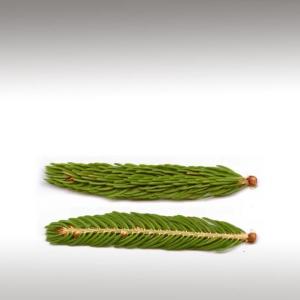

There are over 40 species of Spruce some of which are not for medicinal use.
Black Spruce oil is anti-infectious, anti-inflammatory, antispasmodic, antiparasitic, antiseptic, cortisone like, hormone like, disinfectant, tonic and immune stimulant.
Black Spruce essential oil is rich in monoterpenes that give this oil its anti-inflammatory and analgesic therapeutic effects.
It also is high in camphene, a monoterpene known for its mucolytic and respiratory benefits. It is antiseptic and expectorant and therefore is ideally used for many respiratory issues. It is an ideal remedy for many lung ailments such as asthma and bronchitis especially when used in an inhalation blend.
Spruce essential oil has been used traditionally for infections and for supporting the immune system. It also very good for arthritis, rheumatic, sciatica and lower back pain. Arthritis and rheumatism, infections (respiratory and sinus), fungal infections (Candida), prostatitis, hyperthyroidism, immune depression, lumbago (back pain), sciatica and bone pain, stimulate thymus and adrenal glands.
According to Dr. Kurt Schnabelt, Black Spruce is also known to strengthen and support the adrenal glands during times of stress and fatigue. This supports the fact that Black Spruce is not only calming and sedating, but uplifting as well.
Black Spruce needle essential oil has a long history of use in saunas, steam baths, and as an additive to baths and massage products in spas. A particular strength of this essential oil is it's ability to target sore muscles and reenergize.
Black Spruce oil is anti-infectious, anti-inflammatory, antispasmodic, antiparasitic, antiseptic, cortisone like, hormone like, disinfectant, tonic and immune stimulant.
Black Spruce essential oil is rich in monoterpenes that give this oil its anti-inflammatory and analgesic therapeutic effects.
It also is high in camphene, a monoterpene known for its mucolytic and respiratory benefits. It is antiseptic and expectorant and therefore is ideally used for many respiratory issues. It is an ideal remedy for many lung ailments such as asthma and bronchitis especially when used in an inhalation blend.
Spruce essential oil has been used traditionally for infections and for supporting the immune system. It also very good for arthritis, rheumatic, sciatica and lower back pain. Arthritis and rheumatism, infections (respiratory and sinus), fungal infections (Candida), prostatitis, hyperthyroidism, immune depression, lumbago (back pain), sciatica and bone pain, stimulate thymus and adrenal glands.
According to Dr. Kurt Schnabelt, Black Spruce is also known to strengthen and support the adrenal glands during times of stress and fatigue. This supports the fact that Black Spruce is not only calming and sedating, but uplifting as well.
Black Spruce needle essential oil has a long history of use in saunas, steam baths, and as an additive to baths and massage products in spas. A particular strength of this essential oil is it's ability to target sore muscles and reenergize.
Submitted by OperaDreamhouse (June 13, 2014)
Black Spruce Essential Oil (Picea Mariana) ☸ Essential oils ☸ Spiritual Practises


Black Spruce tree, a sense of rootedness and expansiveness occurs. Once feeling grounded, we can feel more connected to our breath, opening and expanding on many levels. Black Spruce essential oil allows us to recall memories. When we can feel more comfortable and grounded in our physical bodies, all things are possible.
It assists us in working with our shadow side thus allowing a higher vibration to occur.
The Native Americans used Spruce for spiritual and practical reasons. They used it for protection and capturing the universal energy here on earth the earth plane. The Lakota Indians used spruce to connect with the Great Spirit during spiritual ceremonies and rituals.
This essential oil is wonderful when working with the Root (1st chakra) and Heart (4th chakra). Black Spruce essential oil fits to the heart, Solar Plexus and Sacral Chakras.
It assists us in working with our shadow side thus allowing a higher vibration to occur.
The Native Americans used Spruce for spiritual and practical reasons. They used it for protection and capturing the universal energy here on earth the earth plane. The Lakota Indians used spruce to connect with the Great Spirit during spiritual ceremonies and rituals.
This essential oil is wonderful when working with the Root (1st chakra) and Heart (4th chakra). Black Spruce essential oil fits to the heart, Solar Plexus and Sacral Chakras.
Submitted by OperaDreamhouse (June 13, 2014)
Lemongrass Essential Oil (Cymbopogon Citratus) ☸ Essential oils ☸ Medicine / Health
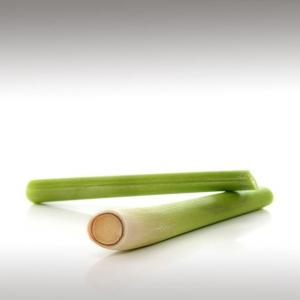

The therapeutic properties of Lemongrass oil are analgesic, anti-depressant, antimicrobial. antipyretic, antiseptic, astringent, bactericidal, carminative, deodorant, diuretic, febrifuge, fungicidal, galactagogue, insecticidal, nervine, nervous system sedative and tonic.
Lemongrass oil has great benefits as a muscle and skin toner, and revitalizes the body and mind, helps with infections.
Lemongrass oil helps tone the muscles and tissue, relieves muscle pains by making the muscle more supple. It helps with correcting poor circulation and as an insect repellant. It is a great overall tonic for the body and it boosts the parasympathetic nervous system, which is a boon when recovering from illness, as it also stimulates glandular secretions.
Lemongrass contains 65-85% citral and active ingredients such as myrcene, an antibacterial and pain reliever.
In a small, randomised, controlled trial, an infusion made from Cymbopogon Citratus was used as an inexpensive remedy for the treatment of oral thrush in HIV / AIDS patients.
The study concluded that lemongrass essential oil may be the most effective essential oil against HSV-1 infection.
The essential oil of Cymbopogon Citratus works as an effective panacea against bacteria, flu and colds. In hot weather, this is the best oil to cool down the body temperature and to revive the mind and soul.
Citral demonstrated very good effectiveness and broad spectrum activity against Candida species. The study demonstrated that Lemongrass oil instead of citral can be used in pharmaceutical preparations for its antifungal activity.
Lemongrass mixed in salt and warm water can be effective in treating Trichophyton mentagrophytes (Tinea pedis).
This oil have at least a hypothetical potential to affect chronic conditions such as anxiety, depression, headaches or epilepsy, that do not respond well to conventional treatments.
This fragrant grass was used in the ancient cultures to normalize and ease symptoms of PMS.
Lemongrass has been used in medicine in India for more than 2000 years. It has been used for its carminative and anti-spasmodic activity. In India it is known as "Choomana Poolu" and is also referred to as "Indian Verben"' or "Indian Melissa oil" and used in Ayurvedic medicine to help bring down fevers and treat infectious illnesses.
Lemongrass is widely used in Asian cuisine for its citrus flavor. The tea from its leaves has been widely used as an antiseptic, febrifuge, antidyspeptic, carminative, tranquilizer and stomachic.
In Chinese medicine, lemongrass is indicated to dispel wind and free network vessels, warm center and relieve pain. Used for common cold with headache, diarrhea, wind-cold impediment pain, cold pain in stomach duct and abdomen, knocks and falls.
Cymbopogon Citratus has been used by the Brazilian Quilombolas tribe to decrease blood pressure and to calm individuals (anxiolytic). It is also used in Brazilian folk medicine in a tea called "Abafado" as a sedative, for gastrointestinal problems, and for fever. in Brazilian folk medicinethisoil is used for its hypnotic and anticonvulsant properties. This oil has been traditionally used to treat gastrointestinal discomforts.
Side effects:
Lemongrass oil can irritate a sensitive skin, so care should be taken. It should be avoided in pregnancy, due to it being a possible skin irritant. Not recommended during pregnancy or breastfeeding due to lack of sufficient human data.
Lemongrass may lower blood sugar levels. Caution is advised in patients with diabetes or hypoglycemia, and in those taking drugs, herbs, or supplements that affect blood sugar. Serum glucose levels may need to be monitored by a healthcare provider, and medication adjustments may be necessary.
Children: Avoid topical use on children under 2 years.
Lemongrass oil has great benefits as a muscle and skin toner, and revitalizes the body and mind, helps with infections.
Lemongrass oil helps tone the muscles and tissue, relieves muscle pains by making the muscle more supple. It helps with correcting poor circulation and as an insect repellant. It is a great overall tonic for the body and it boosts the parasympathetic nervous system, which is a boon when recovering from illness, as it also stimulates glandular secretions.
Lemongrass contains 65-85% citral and active ingredients such as myrcene, an antibacterial and pain reliever.
In a small, randomised, controlled trial, an infusion made from Cymbopogon Citratus was used as an inexpensive remedy for the treatment of oral thrush in HIV / AIDS patients.
The study concluded that lemongrass essential oil may be the most effective essential oil against HSV-1 infection.
The essential oil of Cymbopogon Citratus works as an effective panacea against bacteria, flu and colds. In hot weather, this is the best oil to cool down the body temperature and to revive the mind and soul.
Citral demonstrated very good effectiveness and broad spectrum activity against Candida species. The study demonstrated that Lemongrass oil instead of citral can be used in pharmaceutical preparations for its antifungal activity.
Lemongrass mixed in salt and warm water can be effective in treating Trichophyton mentagrophytes (Tinea pedis).
This oil have at least a hypothetical potential to affect chronic conditions such as anxiety, depression, headaches or epilepsy, that do not respond well to conventional treatments.
This fragrant grass was used in the ancient cultures to normalize and ease symptoms of PMS.
Lemongrass has been used in medicine in India for more than 2000 years. It has been used for its carminative and anti-spasmodic activity. In India it is known as "Choomana Poolu" and is also referred to as "Indian Verben"' or "Indian Melissa oil" and used in Ayurvedic medicine to help bring down fevers and treat infectious illnesses.
Lemongrass is widely used in Asian cuisine for its citrus flavor. The tea from its leaves has been widely used as an antiseptic, febrifuge, antidyspeptic, carminative, tranquilizer and stomachic.
In Chinese medicine, lemongrass is indicated to dispel wind and free network vessels, warm center and relieve pain. Used for common cold with headache, diarrhea, wind-cold impediment pain, cold pain in stomach duct and abdomen, knocks and falls.
Cymbopogon Citratus has been used by the Brazilian Quilombolas tribe to decrease blood pressure and to calm individuals (anxiolytic). It is also used in Brazilian folk medicine in a tea called "Abafado" as a sedative, for gastrointestinal problems, and for fever. in Brazilian folk medicinethisoil is used for its hypnotic and anticonvulsant properties. This oil has been traditionally used to treat gastrointestinal discomforts.
Side effects:
Lemongrass oil can irritate a sensitive skin, so care should be taken. It should be avoided in pregnancy, due to it being a possible skin irritant. Not recommended during pregnancy or breastfeeding due to lack of sufficient human data.
Lemongrass may lower blood sugar levels. Caution is advised in patients with diabetes or hypoglycemia, and in those taking drugs, herbs, or supplements that affect blood sugar. Serum glucose levels may need to be monitored by a healthcare provider, and medication adjustments may be necessary.
Children: Avoid topical use on children under 2 years.
Submitted by OperaDreamhouse (June 13, 2014)
Walnut Oil (Juglans Regia) ☸ Base oils ☸ Beauty / Cosmetics
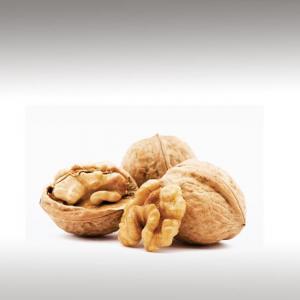

Suitable for dry, normal, mature and oily skin types.
Walnut oil is a very good antioxidant and helps fight aging really well. It is extremely good for aging skin. Walnut oil is used to treat dry skin and is a key ingredient in many anti-wrinkle and anti-aging products.
The oil has great emollient qualities and often used as a blend by masseurs. It is used to regenerate and moisturise damaged skin.
Use a small amount of this eye cream to protect and nourish the delicate under-eye area. It is also used as a sunbathing oil as it protect the skin from UV damage and enhances tanning.
It shares several of the same benefits as other nut-based hair oils, such as cleaning the scalp, moisturizing hair, preventing hair loss while encouraging growth, and keeping strands stronger and healthy.
Walnut oil may also help to make the hair color appear more vibrant and lustrous. It is believed that the Walnut oil cleans the scalp of excess dirt, sweat and dead skin cells. This also helps to prevent dandruff, also known as seborrheic dermatitis. Walnut oil also contains antifungal properties that are believed to combat several infections that may affect the scalp and cause hair loss.
The high concentration of omega - 3, omega - 6 and omega - 9 also help to prevent balding by strengthening the hair follicles. The application of Walnut oil for hair cleansing also suggests it may be effective in removing signs of cradle cap in infants.
Walnut oil is a very good antioxidant and helps fight aging really well. It is extremely good for aging skin. Walnut oil is used to treat dry skin and is a key ingredient in many anti-wrinkle and anti-aging products.
The oil has great emollient qualities and often used as a blend by masseurs. It is used to regenerate and moisturise damaged skin.
Use a small amount of this eye cream to protect and nourish the delicate under-eye area. It is also used as a sunbathing oil as it protect the skin from UV damage and enhances tanning.
It shares several of the same benefits as other nut-based hair oils, such as cleaning the scalp, moisturizing hair, preventing hair loss while encouraging growth, and keeping strands stronger and healthy.
Walnut oil may also help to make the hair color appear more vibrant and lustrous. It is believed that the Walnut oil cleans the scalp of excess dirt, sweat and dead skin cells. This also helps to prevent dandruff, also known as seborrheic dermatitis. Walnut oil also contains antifungal properties that are believed to combat several infections that may affect the scalp and cause hair loss.
The high concentration of omega - 3, omega - 6 and omega - 9 also help to prevent balding by strengthening the hair follicles. The application of Walnut oil for hair cleansing also suggests it may be effective in removing signs of cradle cap in infants.
Submitted by OperaDreamhouse (May 28, 2014)
Walnut Oil (Juglans Regia) ☸ Base oils ☸ Food / Cooking


Walnut oil is edible and is generally used less than other oils in food preparation, often due to high pricing. Shelf life is 6 month.
It is light-coloured and delicate in flavour and scent, with a nutty quality. Walnut oil has a rich, nutty flavor that is perfect for salad dressings, to flavor fish and steaks, to toss with pasta, and to jazz up desserts.
Although chefs sometimes use Walnut oil for pan frying, most avoid walnut oil for high temperature cooking; heating tends to reduce the oil's flavour and nutritive value and to produce a slight bitterness. In addition cooking rapidly destroys the oil's antioxidants. Walnut oil is at its most valuable in cold dishes, where it lends its flavour to best advantage.
Walnut oil to a chicken or turkey salad along with some grapes and chopped walnuts. Brush a thin coat of Walnut oil on grilled fish and steaks just before serving. Toss freshly cooked pasta in a mixture of Walnut oil and spices.
It is light-coloured and delicate in flavour and scent, with a nutty quality. Walnut oil has a rich, nutty flavor that is perfect for salad dressings, to flavor fish and steaks, to toss with pasta, and to jazz up desserts.
Although chefs sometimes use Walnut oil for pan frying, most avoid walnut oil for high temperature cooking; heating tends to reduce the oil's flavour and nutritive value and to produce a slight bitterness. In addition cooking rapidly destroys the oil's antioxidants. Walnut oil is at its most valuable in cold dishes, where it lends its flavour to best advantage.
Walnut oil to a chicken or turkey salad along with some grapes and chopped walnuts. Brush a thin coat of Walnut oil on grilled fish and steaks just before serving. Toss freshly cooked pasta in a mixture of Walnut oil and spices.
Submitted by OperaDreamhouse (May 28, 2014)
Walnut Oil (Juglans Regia) ☸ Base oils ☸ Medicine / Health


It has now been well established that eating Walnuts on a regular basis has definite health benefit. The most significant of which being a reduction in the risk of coronary heart disease. Adding Walnuts to the daily diet can certainly help one maintain a healthful body balance.
Walnuts and Walnut oil are also rich in antioxidants and are one of the best antioxidant sources among the tree nuts. Several medical studies have conducted research that indicates that Walnut oil offers a rich source for antioxidants, specifically ellagic acid.
Walnut oil are rich in phytonutrients and are an excellent source of selenium, phosphorous, magnesium, zinc, iron, and calcium that are helpful in stabilizing body hormones. A couple of teaspoons a day of Walnut oil can be beneficial for people suffering from the skin rashes called eczema.
Athlete's foot and Candida are some of the infections which are known to get treated with the application of Walnut oil. This oil treats psoriasis.
This oil has also high levels of polyunsaturated oils like omega - 3 and omega - 6 which help to reduce inflammation and helps prevent diseases like arthritis.
It is also associated with numerous health benefits which includes protection against heart disease, some types of cancer and slowing of the aging process (omega - 3).
This oil improves blood circulation: Walnut oil contains high levels of monounsaturated oils such as omega - 9 which help to keep your arteries supple. The flexibility of the arteries promotes the flow of blood free of any hardening leading to hyper tension and heart disease.
The cardio-protective benefits of Walnut oil are primarily due to the high concentration of alpha-linolenic acid (ALA), which is an omega-3 fatty acid that ultimately is converted to eicosapentaenoic acid (EPA), and docosahexaenoic acid (DHA), and omega - 3 fatty acids that are easily utilized by the body. The high concentration of omega - 3 fatty acids helps maintain a healthy brain.
Consumption of walnuts or Walnut oil has been shown to lower total cholesterol, LDL (bad cholesterol) and the ratio of LDL to HDL (good cholesterol). Furthermore, regular Walnut oil consumption reduced triglyceride levels 19 to 33% in a 45-day study.
Another benefit is the increase of blood levels of melatonin so assist with insomnia. Walnut oil has melatonin, which will help put your sleeping habits back in the right path.
Walnut oil is known to be a remedy to treat fungal infections.
Tones down belly fatt (Walnut oil is boosting the metabolism).
Walnuts and Walnut oil are also rich in antioxidants and are one of the best antioxidant sources among the tree nuts. Several medical studies have conducted research that indicates that Walnut oil offers a rich source for antioxidants, specifically ellagic acid.
Walnut oil are rich in phytonutrients and are an excellent source of selenium, phosphorous, magnesium, zinc, iron, and calcium that are helpful in stabilizing body hormones. A couple of teaspoons a day of Walnut oil can be beneficial for people suffering from the skin rashes called eczema.
Athlete's foot and Candida are some of the infections which are known to get treated with the application of Walnut oil. This oil treats psoriasis.
This oil has also high levels of polyunsaturated oils like omega - 3 and omega - 6 which help to reduce inflammation and helps prevent diseases like arthritis.
It is also associated with numerous health benefits which includes protection against heart disease, some types of cancer and slowing of the aging process (omega - 3).
This oil improves blood circulation: Walnut oil contains high levels of monounsaturated oils such as omega - 9 which help to keep your arteries supple. The flexibility of the arteries promotes the flow of blood free of any hardening leading to hyper tension and heart disease.
The cardio-protective benefits of Walnut oil are primarily due to the high concentration of alpha-linolenic acid (ALA), which is an omega-3 fatty acid that ultimately is converted to eicosapentaenoic acid (EPA), and docosahexaenoic acid (DHA), and omega - 3 fatty acids that are easily utilized by the body. The high concentration of omega - 3 fatty acids helps maintain a healthy brain.
Consumption of walnuts or Walnut oil has been shown to lower total cholesterol, LDL (bad cholesterol) and the ratio of LDL to HDL (good cholesterol). Furthermore, regular Walnut oil consumption reduced triglyceride levels 19 to 33% in a 45-day study.
Another benefit is the increase of blood levels of melatonin so assist with insomnia. Walnut oil has melatonin, which will help put your sleeping habits back in the right path.
Walnut oil is known to be a remedy to treat fungal infections.
Tones down belly fatt (Walnut oil is boosting the metabolism).
Submitted by OperaDreamhouse (May 28, 2014)
Macadamia Oil (Macadamia Integrifolia) ☸ Base oils ☸ Beauty / Cosmetics
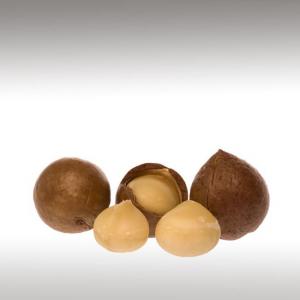

Suitable for dry, mature skin types (Being an oily oil, it is not suitable for oily or acne-prone skin)
Macadamia Nut oil, Macadamia Integrifolia, is excellent in hair care. It softens the hair, provides flowing body to the hair, and improves hair manageability. Dry hair is coated with lightweight emollience.
As mature skin is lacking in this essential fatty acid, Macadamia Nut oil is an excellent carrier for all anti-aging, and mature, especially menopausal, treatment products, where it offers restructuring and moisturizing properties.
Macadamia oil is very gentle and is absorbed rapidly into the skin, giving the product a silky luxurious feel. Macadamia Nut oil is easily absorbed by the skin and may be used on all types of skin including very sensitive areas around the eyes.
Macadamia Nut oil is highly compatible with the human skin and used to promote young, soft and supple skin. It makes a great massage oil and is recommended for dry and mature skin that is in need of extra nourishment and moisture.
The oil has a high anti-oxidant content and deep skin penetrating properties, which make it ideal for dry or ageing skin. Macadamia is used for skin protection and treating disorder like scars,sunburns, minor wouds and other irritations.
Macadamia Nut oil, Macadamia Integrifolia, is excellent in hair care. It softens the hair, provides flowing body to the hair, and improves hair manageability. Dry hair is coated with lightweight emollience.
As mature skin is lacking in this essential fatty acid, Macadamia Nut oil is an excellent carrier for all anti-aging, and mature, especially menopausal, treatment products, where it offers restructuring and moisturizing properties.
Macadamia oil is very gentle and is absorbed rapidly into the skin, giving the product a silky luxurious feel. Macadamia Nut oil is easily absorbed by the skin and may be used on all types of skin including very sensitive areas around the eyes.
Macadamia Nut oil is highly compatible with the human skin and used to promote young, soft and supple skin. It makes a great massage oil and is recommended for dry and mature skin that is in need of extra nourishment and moisture.
The oil has a high anti-oxidant content and deep skin penetrating properties, which make it ideal for dry or ageing skin. Macadamia is used for skin protection and treating disorder like scars,sunburns, minor wouds and other irritations.
Submitted by OperaDreamhouse (May 28, 2014)
Sunflower Oil (Helianthus Annuus) ☸ Base oils ☸ Medicine / Health
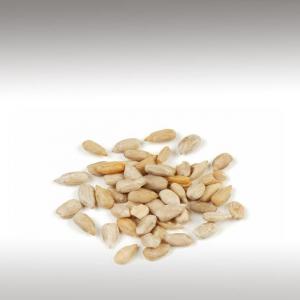

Sunflower oil has many medicinal and cosmetic uses and may be helpful if you are suffering from acne, eczema, inflammation, general redness and irritation of the skin.
Sunflower oil has been used historically as a topical anti-inflammatory and pain reliever, and it is taken by mouth to relieve constipation and ulcers and to treat infection. Sunflower oil is high in Vitamins A, C and D, all of which have protective qualities. It's also a great product to use on newborn baby for extra skin protection.
Sunflower oil research:
Limited research suggests that Sunflower oil may not affect the levels of two markers of inflammation in breast milk, interleukin-8 (IL-8) and transforming growth factor-beta (TGF-beta).
Limited research suggests that Sunflower oil may help reduce blood levels of cholesterol.
Research suggests that Sunflower oil may not have an effect on blood pressure in patients diagnosed with high blood pressure.
At this time, it appears that Sunflower oil may not increase the level of Vitamin A in blood or breast milk of pregnant or breastfeeding women
Sunflower oil is often used as a placebo in clinical trials examining the effect of other oils.
Side effects:
Sunflower oil may lower blood sugar levels. Caution is advised in patients with diabetes or hypoglycemia and in those taking drugs, herbs, or supplements that affect blood sugar. Blood glucose levels may need to be monitored by a qualified healthcare professional, including a pharmacist. Medication adjustments may be necessary.
Use cautiously in obese individuals, as clinical studies have reported conflicting findings concerning Sunflower oil's effect on body weight.
Avoid with known allergy or hypersensitivity to Helianthus Annuus, it constituents, or other members of the Asteraceae family.
Sunflower oil has been used historically as a topical anti-inflammatory and pain reliever, and it is taken by mouth to relieve constipation and ulcers and to treat infection. Sunflower oil is high in Vitamins A, C and D, all of which have protective qualities. It's also a great product to use on newborn baby for extra skin protection.
Sunflower oil research:
Limited research suggests that Sunflower oil may not affect the levels of two markers of inflammation in breast milk, interleukin-8 (IL-8) and transforming growth factor-beta (TGF-beta).
Limited research suggests that Sunflower oil may help reduce blood levels of cholesterol.
Research suggests that Sunflower oil may not have an effect on blood pressure in patients diagnosed with high blood pressure.
At this time, it appears that Sunflower oil may not increase the level of Vitamin A in blood or breast milk of pregnant or breastfeeding women
Sunflower oil is often used as a placebo in clinical trials examining the effect of other oils.
Side effects:
Sunflower oil may lower blood sugar levels. Caution is advised in patients with diabetes or hypoglycemia and in those taking drugs, herbs, or supplements that affect blood sugar. Blood glucose levels may need to be monitored by a qualified healthcare professional, including a pharmacist. Medication adjustments may be necessary.
Use cautiously in obese individuals, as clinical studies have reported conflicting findings concerning Sunflower oil's effect on body weight.
Avoid with known allergy or hypersensitivity to Helianthus Annuus, it constituents, or other members of the Asteraceae family.
Submitted by OperaDreamhouse (May 21, 2014)
Page 38 of 48

